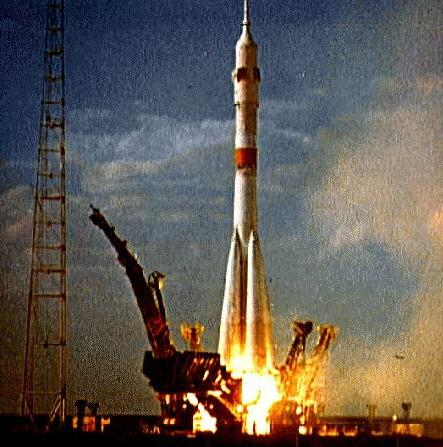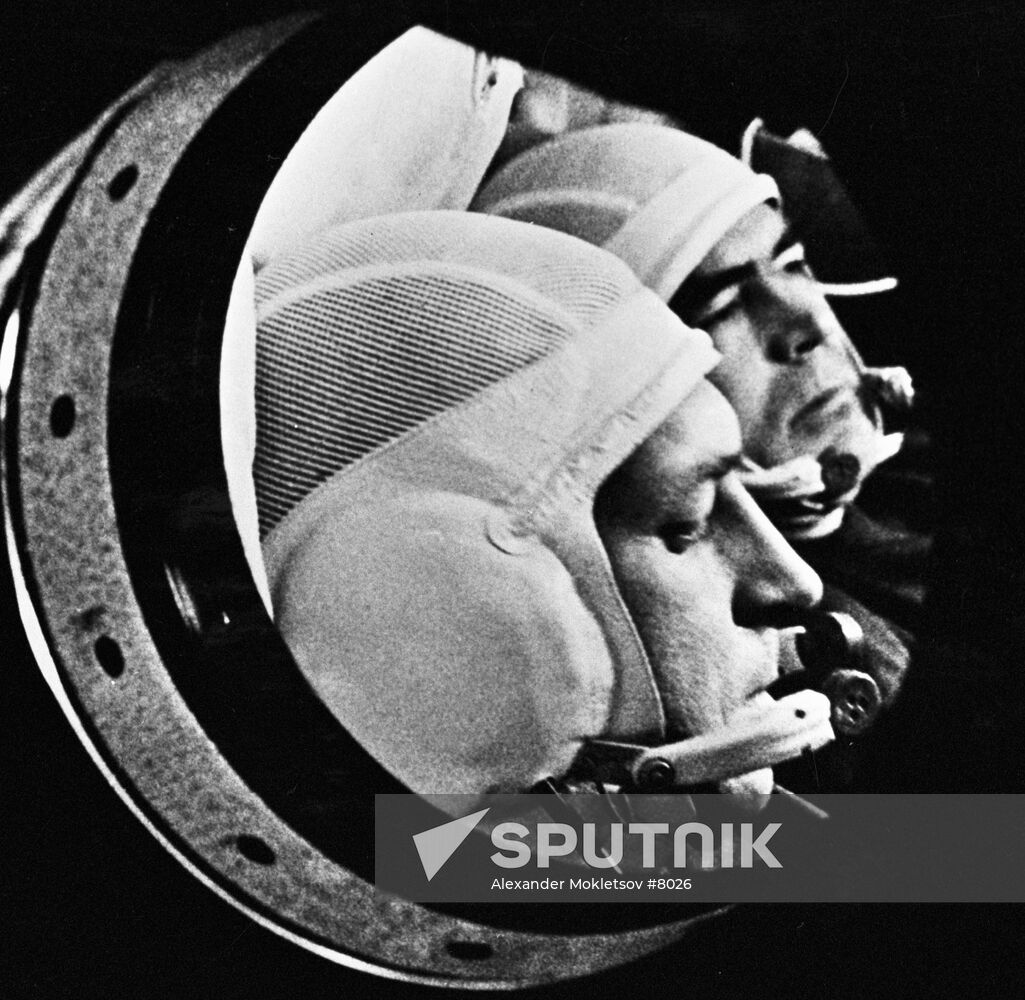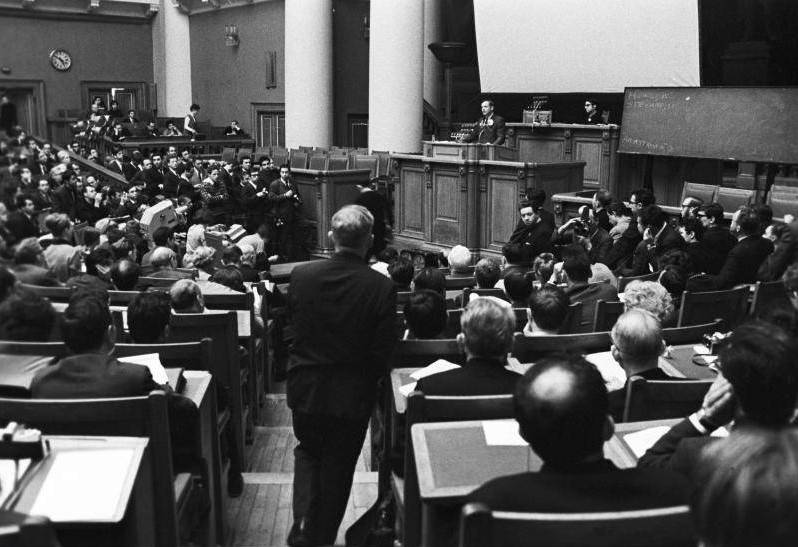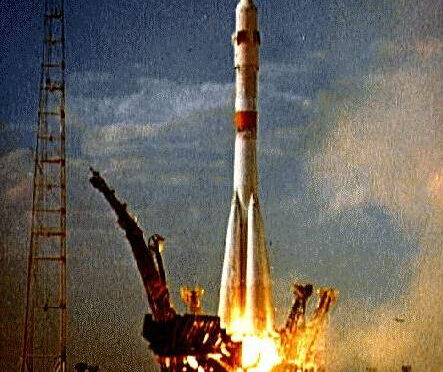
by Gideon Marcus
There's big news on both sides of the pole regarding a pair of recently ended space flights: Apollo 13 and Soyuz 9…

The Verdict is in on Apollo 13
The official NASA report is out on the near-tragedy but ultimate triumph of Apollo 13. It turns out that faulty thermostatic switches failed to keep the temperature down when Swigert activated the oxygen and hydrogen tank-stirrers. The heat in Oxygen Tank No. 1 spiked, causing wires to fail and short circuit, lighting the oxygen and causing an explosion.
The Apollo 13 Review Board suggested that use of combustible materials be minimized in the tank system, onboard warning systems be reviewed and modified, and the whole kit and kaboodle re-qualified for use. The Board also found that the failure of the switches was no random accident, but an inevitability due to conflicting standards throughout the system and an incompatibility with ground support equipment.

Edgar M. Cortright, Langley director and chairman of the review board called this, "a serious oversight in which all parties [NASA and contractors] shared…Only outstanding performance on the part of the crew, Mission Control and other members of the team which supported the operations successfully returned the crew to earth…Perfection is not only difficult to achieve, but difficult to maintain…The Board feels that the Apollo accident holds important lessons which, when applied to future missions, will contribute to the safety and effectiveness of manned space flight."
Let's hope so. Congress is already mulling the cut of yet another Apollo mission, and there are rumors that President Nixon is getting nervous about a space disaster happening on his watch. Another near miss—or worse—could shut down the whole Moon program in an instant.
Life goes on over Soviet Russia
You might be excused for having missed that coda to the Apollo 13 story given that the Reds have stolen the space headlines for the past couple of weeks: from June 2 to June 19, the U.S.S.R.’s Soyuz 9, carrying Vostok 3 veteran Andrian G. Nikolayev as well as engineer Vitaly I. Sevastyanov, orbited the Earth. Unlike the previous several Soyuz flights, this was a solo endurance mission, with either an emphasis on researching the biomedical effects of long-term weightlessness (if you buy what TASS, the Soviet news agency, was saying in English) or Earth science research (if you buy what TASS was saying in Russian).

Soyuz 9 blasts off
Also unusual for this flight was that it was filmed and photographed for public consumption from the moment of take-off. Usually, the Soviets aren't so candid. TASS issued daily bulletins that described the routine of space flight chores and experiments. For instance: “While one cosmonaut runs a vacuum cleaner, the other brews coffee or shaves.” Riveting stuff. One wonders, if Nikolaev's wife, Valentina Tereshkova, had gone up in Sevastyanov's place, whether the domestic chores would remain evenly divided.

Nikolaev in the commander seat; Sevastyanov is closer
The cosmonauts wore special suits reinforced with rubber rods, both to make some movements easier, and also to add resistance to keep muscles in trim without the constant tug of gravity to assist. Aside from soot that coated the window early in flight from an engine burn, the only problem reported by the crew was insomnia, which was apparently overcome by the end.

Model of the Soyuz, released last year
One unique way in which the cosmonauts passed the time was by playing the first chess match in space. Using a magnetic chess board and pieces, the game had Nikolaev and Sevastyanov play as a team against cosmonaut Viktor Gorbatko and cosmonaut chief Nikolai Kamanin in mission control, relaying moves over the radio. The match apparently ended in a draw.

Vostok 6's Valery Bykovsky (left), covers the game while Soyuz 7's Viktor Gorbatko (center) and cosmonaut chief Nikolai Kamanin play
I think Avalon Hill should send them a wargame for the next flight—perhaps Stalingrad?
Yankees are good sports
Upon landing in Kazakhstan on the 19th, Soyuz 9 set a new manned flight endurance record, surpassing the 13-day 8-hr 35-min record set by Gemini 7. Apollo Astronauts Frank Borman and James A. Lovell, Jr., sent a congratulatory telegram to Soyuz 9 crew: "Your accomplishments are adding new evidence supporting the capability of men to live and work in extended periods in space. We wish you continued success in this important mission and a safe return to earth."

Lovell later told the press in Houston that the mission suggested that the next step would be a permanent earth-orbiting space station: “Soyuz now seems to be purely an aeromedical flight, pushing men to their limits to see how weightlessness and the pure oxygen environment affects their work in space. It all fits very naturally with the space station concept.”
With our Skylab not set to fly until late 1972, it is possible that the Soviets will beat us in a new race, one for the development of Earth orbit. One person who seems rather sanguine about the possibility is Apollo 11 astronaut, Neil Armstrong. He was in the U.S.S.R. earlier this month, where he addressed the Soviet Academy of Sciences. Armstrong said he favored increased space cooperation, and that the development of space stations and shuttles was the “most important” method of practical space usage.

Armstrong giving his talk at the 13th annual Committee on Space Research
(COSPAR) meeting, in Leningrad’s Tauride Palace
"I have found in my discussions with my Soviet cosmonaut colleagues that their objectives in space are very much the same as ours." The first man on the Moon went on to say that he would be glad to be member of a U.S.-U.S.S.R. space crew.
Can you imagine the Space Race ending in a tie? It's not such a bad idea when you think about it…
[New to the Journey? Read this for a brief introduction!]



